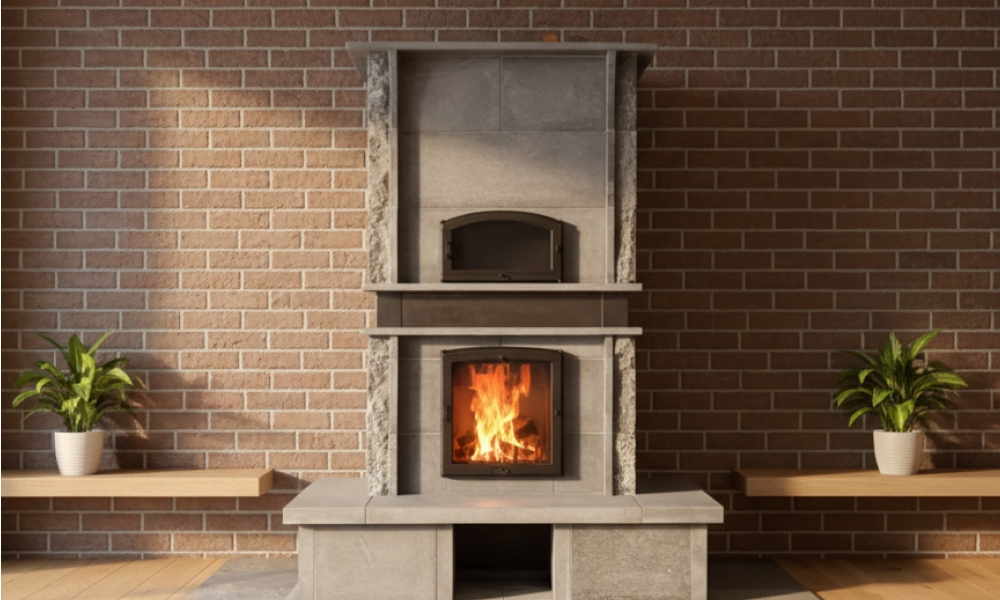Soapstone is a superior thermal mass material for radiant heating compared to cast refractory (like castable refractory concrete, firebrick or common red brick) due to its unique physical and thermal properties. Here’s a detailed comparison explaining why soapstone excels in radiant heating applications:
1. Higher Thermal Conductivity
- Soapstone: Soapstone, primarily composed of talc, magnesium silicate, and other minerals, has a relatively high thermal conductivity (around 6-12 W/m·K, depending on composition). This allows it to absorb, store, and release heat efficiently, making it ideal for radiant heating systems where steady, even heat distribution is desired.
- Cast Refractory: Cast refractory materials, typically made from cement-based compounds with aggregates like alumina or silica, have lower thermal conductivity (often 0.5-2 W/m·K). This makes them slower to absorb and transfer heat, reducing their efficiency in radiant heating applications where quick and consistent heat release is beneficial.
2. Superior Heat Storage Capacity (Thermal Mass)
- Soapstone: Soapstone has a high specific heat capacity (around 0.98-1.0 kJ/kg·K) and a high density (about 2.8-3.0 g/cm³), allowing it to store significant amounts of heat per unit volume. This means it can absorb heat slowly and release it over an extended period, providing consistent, long-lasting radiant warmth even after the heat source is turned off.
- Cast Refractory: While cast refractories also have decent thermal mass (specific heat capacity around 0.8-1.0 kJ/kg·K, density around 2.0-2.5 g/cm³), their heat storage capacity is generally lower than soapstone’s due to lower density and less optimal mineral composition. This results in faster heat loss and less sustained radiant output.
3. Even Heat Distribution
- Soapstone: The mineral structure of soapstone (talc’s layered, soft composition) allows it to distribute heat evenly across its surface, minimizing hot spots and providing a comfortable, uniform radiant heat.
- Cast Refractory: Cast refractories can develop uneven heat distribution due to their heterogeneous composition and potential for micro-cracks or air pockets during casting. This can lead to less consistent radiant heating performance.
4. Durability in Thermal Cycling
- Soapstone: Soapstone is highly resistant to thermal shock due to its low thermal expansion coefficient and natural flexibility from its talc content. It can withstand repeated heating and cooling cycles without cracking, making it ideal for long-term use in radiant heating systems like fireplaces or masonry heaters.
- Cast Refractory: While cast refractories are designed for high-temperature environments (e.g., kilns or industrial furnaces), they are more prone to cracking or spalling under rapid thermal cycling, especially in lower-temperature radiant heating applications where temperature fluctuations are frequent, like a masonry heater.
5. Efficiency in Radiant Heat Emission
Soapstone: Soapstone’s ability to emit infrared radiation efficiently makes it particularly effective for radiant heating. Its surface naturally radiates heat in a way that feels comfortable to humans, as it mimics the wavelength of heat emitted by the human body.
Cast Refractory: Cast refractories are designed more for heat resistance than efficient radiant emission. Their surface may not radiate heat as effectively, and they often retain heat longer rather than releasing it as radiant energy, which can reduce their effectiveness in radiant heating systems.
Call or email us today to discuss a soapstone masonry heater for your home or project.

Leave a Reply